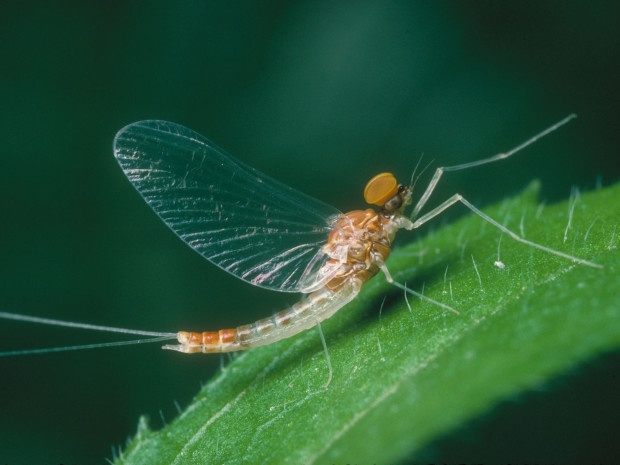We have much more to do and your continued support is needed now more than ever.
Bugs Are Beautiful (Really!)
By Beverly Payton
Chances are that if you were asked to name some animals that make up the wonderful diversity of wildlife in and around our streams and rivers, you probably mention fish, frogs, turtles and, maybe, some aquatic mammals, like beavers or—if you live in the southeast—manatees. But did you know that having a wide variety of bugs—or, more specifically, macroinvertebrates, tiny animals without a backbone visible to the naked eye—is crucial to a healthy freshwater ecosystem? While most macroinvertebrates are insects, this classification also includes larger animals such as crayfish, snails and mussels.

Many species of macroinvertebrates are an important food source for carnivorous fish and birds, which in-turn are eaten by larger carnivores, including humans.
Macroinvertebrates are also important because they help clean streams by breaking down and consuming organic matter like leaves, algae, bacteria and fungi. In fact, biologists classify them according to the kind of work they do. Shredders break down leaves and other organic material into finer particles. Collectors feed on the tiny organic particulates produced by the shredders. Scrapers feed on algae and other organic material that grows on rocks. Predators hunt live prey, including other macroinvertebrates.
Besides the important role they play in the food web and in cleaning streams and rivers, many macroinvertebrates are very sensitive to changes in their environment. So researchers, like the entomologists at Stroud Water Research Center, count the number and diversity of macroinvertebrates to measure the overall health of a stream. A healthy stream has great abundance and diversity of macroinvertebrates. A polluted stream may have an overabundance of only a few kinds, or if the water is very polluted, very few of any kind of macroinvertebrates will be present.
The National Rivers and Streams Assessment 2008-2009: A Collaborative Survey found that more than half of the nation’s river and stream miles do not support healthy populations of aquatic life. Learn more about wildlife and water for National Wildlife Week.
A Tiny Clean Water Warning System
Mayflies are one of the most significant macroinvertebrates for freshwater researchers. They spend most of their lives in water. After they change into adults, they only live long enough—from a few hours to a few days, depending on the species—to breed and reproduce. Then they die. Mayflies are especially sensitive to pollutants in the water, so biologists use them similar to the way coal miners used canaries in coalmines, as an early warning signal that something is wrong.
If you are interested in learning about the health of a stream near you, a great tool you can use is the Leaf Pack Experiment Kit to measure the number and kinds of macroinvertebrates that live there. The kit includes everything you need to collect, identify and sort macroinvertebrates and is a great hands-on educational resource for families, classrooms, youth groups and watershed conservation groups. It will help you see why bugs, and other macroinvertebrates, are beautiful.
About the Author
Beverly Payton is the Communications Director for the Stroud Water Research Center.





















